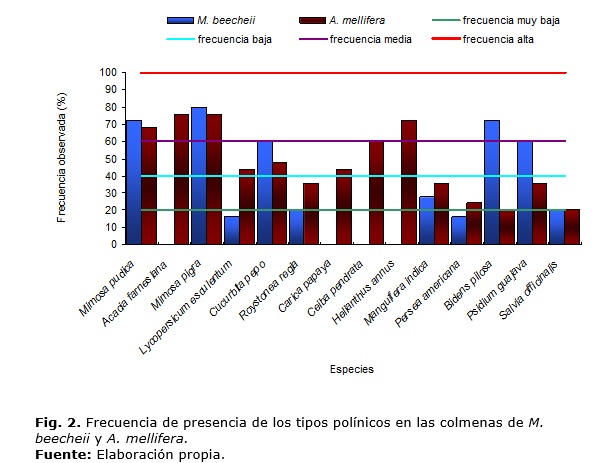Antagonism of Apis mellifera and Melipona beecheii for the sources of feeding
Main Article Content
Abstract
Downloads
Article Details
References
CAIRNS, C. E; et. al. Bee Populations, Forest Disturbance, and Africanization in Mexico. Biotropica, 2005, 37(4), 686692.
CANE, J.H. Habitat fragmentation and native bees: a premature verdict? Conservation Ecology, 2001, 5 (1), 3 Disponible en: http://www.consecol.org/vol5/iss1/art3
CORTOPASSI-LAURINO M., et. al. Global meliponiculture: challenges and opportunities. Apidologie, 2009, 37, 275292.
GENARO, J.A. Origins, composition and distribution of the bees of Cuba (Hymenoptera: Apoidea: Anthophila). Insecta Mundi, 2008. 0052, 1-16.
LEAL, A; et. al. Situación actual de la meliponicultura (Melipona beecheii Bennett) en las provincias de Pinar del Río, La Habana y Matanzas. Memorias del II Congreso Cubano de Apicultura. La Habana, Cuba. Revista Apiciencia, 2007, ISSN 1608-1862.
LEAl, A; et. al. Estrategia para el manejo sustentable de la abeja Melipona beecheii en la polinización de los cultivos en la Agricultura Urbana. Revista Avances. 4 (10). ISSN 1562-3297.
MICHENER, C.D. The Bees of the World. 2a. ed. The Johns Hopkins University Press., 2007.
PINKUS-RENDÓN, M.A., PARRA-TABLA, V. and MELÉNDEZ- RAMÍREZ, V. Floral resource use and interactions between Apis mellifera and native bees in cucurbit crops in Yucatán, México. Canadian Entomologist, 2005, 137: 441-449.
ROUBIK, D.W. The value of bees to the coffee harvest. Nature, 2002, 417:708.
VIVAS, N.J.; MACA J.D., PARDO, M.Caracterización cualitativa del polen recolectado por Apis mellifera L en tres apiarios del municipio de Popayan. Facultad de Ciencias Agropecuarias, 2008, 6 (2):13-18


